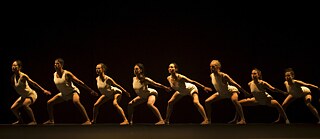A Small Handful of the World
Acceptance, Reconciliation, and Music at a Standstill
Since the jabs and boosters have proven to mitigate instead of stop the progress of the virus, I’m finding myself feeling as I did in the early days of the pandemic. Time has returned to a kind of standstill.
For Antoine Beuger
1. Since the eruption of the COVID-19 global pandemic in early 2020, I have seen space compress and time dilate as my familiar routines of teaching, travelling, and socializing came to an immediate standstill. In the intervening years, I’ve had to orient myself within sharply demarcated horizons of experience comprised of a two-and-a-half mile radius from my home in south Evanston, Illinroois. Lying on the northern edge of Chicago, my environs encompass the coast of Lake Michigan to the east, the Northwestern University campus to the northeast, and the grocery store west of home. Pacing these routes daily, the rhythm of things has changed as the expanse of my life — once spent moving freely across the city unafraid or flying to Düsseldorf to make music with friends each summer — has shrunk to a small handful of the world. The professional demands of the neoliberal university grow, however. Classes still must be taught — hour after hour on mind-numbing Zoom — meetings still have to be scheduled, students still need support and encouragement in what, depressingly, seems more and more like futile endeavors. Walking has become the only way to escape the monotony of video call after video call, a necessary means to recover some sense of spiritual liberty amidst the widening gyre of politically-inflected pandemic catastrophe. Solvitur ambulando. “It is solved by walking,” to quote Augustine of Hippo (and quoted by many others in these times). Well, not exactly “solved.” Not anymore. Life is made endurable by walking.
2. In the early months of 2020, a once-familiar poem by Constantine Cavafy returned to my mind. I began unconsciously reciting its opening two lines almost as a mantra as I yet again forced myself out of the house and towards the lake:
by another monotonous, identical day. The same
things will happen, they will happen again —
the same moments find us and leave us.
A month passes and ushers in another month.
One easily guesses the coming events;
they are the boring ones of yesterday.
And the morrow ends up not resembling a morrow anymore.
Another virtual meeting. Another remote seminar. Another walk up the lake. Another friend sick. Another plan canceled. Another hope dashed. Unlike other writers, I’m not interested in relating some tale of a great awakening to the simple beauty of the world that comes with repetition and close attention. Such an attitude may have been possible in the early days of the pandemic, but things have dragged on too long at too great a human cost to take comfort in such banalities. Of course, the lake is beautiful. Of course, the sun hits it just so at sunset, and it’s quite a sight — one moment a Rothko, an Agnes Martin the next. But there’s just been so much death.
3. In those early days, I remember hoping for newly heightened awareness that would have me ecstatically echoing Gerard Manley Hopkins — “the world is charged with the grandeur of God!” It didn’t ever happen, but it wasn’t for lack of effort on my part. I got out at every opportunity that the weather and my Zoom schedule allowed. Even if I didn’t have some pantheistic awakening, the time of walking did give me something other than the dizzying immobility of staring at students and colleagues trapped in little boxes on an eye-straining screen. These walks, my attempt to recover some sense of the world, were an attempt to overcome one kind of standstill and ended up being stopped in its tracks by another. A couple of weeks before Thanksgiving in 2020, I was returning from yet another early morning walk. As I turned onto my street, I noticed an ambulance and police cars near my house. Dread crept in, and I thought to myself that something had happened (yet again) to Ernie’s wife two doors down. But as I drew near, I saw that the first responders had come to Todd and Lionel’s. I joined my neighbors who were already gathered. Melinda called out to Todd who sat on the stairs to his porch. Head in his hands, he choked out the words, “I lost Lionel.”
4. Lionel had been only briefly sick with COVID, anxiously posting the news on Facebook before the weekend. Then Monday morning, he was gone. The monotony I so selfishly lamented was disrupted with a different kind of time: the standstill of death with its unpleasant tendency to end things outright. It has been difficult for me to celebrate the gradual awareness of the everyday when, in truth, there is nothing about this pandemic that has been “everyday.” It is a state of exception in which lives that should have otherwise gone on living didn’t. Exceptional too is the time, or to be more specific, the temporality of the pandemic — the out-of-joint sense of dilation, repetition, monotony — interrupted by moments of standstill (of death, of grief). Even as things seem to have ground to a halt, the unpredictability of our relationship to events constantly shifts such that within the broader inertia (of work, of life, of friendship), we can’t come to grips with anything. We twist and turn, and yet, nothing fundamentally seems to change. Amid this uncertainty, what might be useful for us as we grieve is to think critically about this mutating sense of time that has exploded into our lives.
5. As walking has proven limited in its ability to provide palliative care, I’ve found myself working with these shifts in my temporal perception by listening. As a musicologist, I’m in the business of listening, and early on, I noticed a shift in how I was doing it. More than usual, I found myself engaging with music that seemed in one way to reproduce the curious states of blocked motion, glacial shift, and sluggish tectonics of the pandemic’s varied temporal flows. Music began to serve as a homeopathic remedy, inuring me to the appallingly named “new normal.” One of my most successful treatments has been Joan La Barbara’s sound painting “Rothko” (1986).
Composed for multitracked bowed pianos (pianos that have strings, which are played with rosined fishing wire) and La Barbara’s multiphonic vocal drones, “Rothko” is an ekphrastic response to the Rothko Chapel in Houston, Texas. Having just completed a book on Morton Feldman’s music for the Rothko Chapel, I was drawn to La Barbara’s own musical translation of the space, which is known for its metaphysical heft and domineering existential presence. More than Feldman, La Barbara highlights the paradoxically static and vortical sensation of the space — the feeling of being at a standstill surrounded by powerful forces beyond one’s control. Its resonance with the lived experience of our present moment is perhaps too obvious to mention, yet there has been something oddly comforting about putting myself in the acoustic environment of La Barbara’s “Rothko.” Above I described walking as palliative, and that is not far from what I think may be happening here. The sound world attunes me to things as they are, which helps me resonate with them in a way that is dissonant but that at least lets me feel something.
6. What a low bar — to simply feel something, even if that something is Rothko’s abstract anxiety rendered sonorous by La Barbara’s empathetic creativity. Other works, though, have helped me mourn the deaths of neighbors and friends’ family members. Among these is “Echos” (1978) by Paris-based Argentinian musique concrète composer Beatriz Ferreyra. Released only in March of 2020, as the world was going into lockdown, “Echos” — despite its more than 40-year life — captured something of the cultural mood with its séance-like formal structure. As is expected in musique concrète, Ferreyra works with extant sounds, which she then splices, layers, breaks down, and reworks into an autonomous composition. Whereas other concrète composers work with a swinging door, a locomotive, or the anonymous sounds of daily life in a seaside village, Ferreyra chooses source material intimately bound up with her biography. She records her niece Mercedes Cornu singing four Latin American folk songs, which she then works over in her usually brilliant fashion. Immediately, the work conjures the vortical space of La Barbara’s “Rothko,” surrounding us in a swirl of voices that move towards, and then away, from abstraction. Cornu’s voice remains present as voice even as it shatters, multiplies, and refracts across the stereo field. Melodies of the folk songs break through like hidden memories. The work’s momentum breaks hard around the four-minute mark as Ferreyra clips Cornu’s voice after each sudden attack. We hear only the sharp intake of breath followed by silence. Gradually, Cornu’s voice multiplies into a resonant choir until the whole thing breaks down in a seemingly unaltered burst of laughter that ambivalently ends the work.
Cornu was killed in a car crash prior to Ferreyra’s composition of “Echos,” and the piece is dedicated to her memory. Given this biographical detail, the piece is also interpretable as an example of grief work — of memorializing and mourning a loved one. Like La Barbara (especially in her contemporaneous work “Shadow Song”), Ferreyra explores the uncanny relationship between magnetic tape and haunting and uses her concrète techniques to produce a tombeau for Cornu that captures the multiple temporalities of grief — the ongoing drudgery of daily life, the sudden recall of a specific tune that turns back the clock, a flash of memory that renews loss and knocks the wind out of us. The form that “Echos” takes is equivocal and does not offer any easy sense of grief’s resolution. If anything, I feel grief’s sheer indeterminacy, that is, its ability to shift my sense of time from the present to the past while occluding any hope for future resolution. One could praise this, as Jacques Derrida might, as resistant mourning that refuses the social demands that we demonstrate resilience and prevent our emotions from getting the best of us. Or one might simply call it what it is — suffering.
7. As news of the vaccine emerged, time shifted yet again to a peculiar expectation of that which would save us. Since the jabs and boosters have proven to mitigate instead of stop the progress of the virus, I’m finding myself feeling as I did in the early days of the pandemic. Time has returned to a kind of standstill. And I find myself stuck in a city, in a room, in a writerly practice. As I’ve lived with this stuckness, I’ve continued to turn to La Barbara, Ferreyra, and others that help me attune to the way we live now. Even so, music has, in many ways, lost its appeal. I find solace in storytelling podcasts that allow me to be with people speaking to one another or who I can imagine are speaking to me: goofy British dudes yucking it up about absurdities or earnestly-told ghost stories have helped ease the increased social isolation of the last few years. Even so, music remains the most important way that I’ve made sense of how things are. I have been hewing close to quiet, slow sounds that allow me to resonate with the decelerated mode of living. Musical experience, more than other art forms, puts us in a relationship with the rhythms of life. In his Chronicle of My Life, Igor Stravinsky offered the insight that: “Music is given to us with the sole purpose of establishing an order in things, including, and particularly, the coordination between man [sic] and time.” It’s this coordination between people and time that has seemed so off. The crashing halt of the pandemic and its disruptions to every aspect of our lives — from our daily habits to our ability to plan the future — have resulted in a profound miscoordination or dissonance between humans and time. Yet, even this miscoordination affords an opportunity to make sense.
By making sense, I don’t mean acceptance. While we should celebrate the good that has happened, we are by no means obligated to accept the evil that has unfolded. Barring acceptance, I am more invested in what Hannah Arendt calls “reconciliation.” In her great essay, “Humanity in Dark Times: Thoughts on Lessing,” Arendt notes the deep need we have to reconcile ourselves to the tragedy of histories — to find a way to bear them and continue living. She is speaking specifically of the calamities of the Second World War, but the point is, I believe, translatable:
That’s why I’ve been turning to music to make sense of things and to lament. And in doing so, I can’t quite let go of “acceptance.” I’ve had in mind a phrase of John Cage’s, as remembered by La Barbara. She recalled:
At a performance of Cage’s agonistically utopian and carnivalesque ‘HPSCHD’ in Berlin, La Barbara found herself incensed by its cacophony, and she experienced it as only adding more chaos to an already chaotic world. Cage’s response was to suggest that his work provided inoculation against the world: “Perhaps the world won’t seem so chaotic.” Or as he put it elsewhere: “Don’t try to change the world, you’ll only make matters worse.” Cage seems to have in mind a bit of what I’ve been getting out of music — a kind of palliative attunement to the temporalities of the modern world in all its grotesque excessiveness. And indeed, it was Cage’s hope that he would change the job of the artist from making to accepting. While I am sympathetic to Cage’s experiments and his dogged resistance to ingrained tastes and preferences, I chafe against this idea of acceptance of things as they are — that art should reproduce the world with its tensions and failures of resonance. I want more from art than acceptance, which itself seems a fairly low bar to clear. Acceptance doesn’t seem good enough anymore. I want the stronger demand of Arendtian reconciliation. In no way are the events of the last years — mass death, economic catastrophe, political destabilization — acceptable. And it is here that I think we should make a particular distinction in the kind of work that art can and should do in such crises of slow and sudden death. It is, I think, the kind of work La Barabara does in contrast to her mentor John Cage.
8. Arendtian recognition is not knowledge, per se, but a kind of experiential resonance in which we can feel how something was or is. Arendt, perhaps more than most, understood the difficulty we have in making sense of incalculable loss. She was not sanguine about the possibility that “mastering the past” can ever happen, but she does see value in repetition in lamentation. And what art, more than music, is capable of is lamentation — a way of remaining in death’s standstill while preserving a modicum of life’s ongoingness. Arendt asks of us something that is quite difficult and, indeed, agonistic. We are to reconcile ourselves — not merely accept what has happened. As I have made sense of the death of Lionel and the death and sickness of other friends, I’ve found myself drawn to sounds like those of Ferreyra and La Barbara that require me to remain in quiet difficulty and that challenge me with their truth. Arendt’s demand of art — that it reconciles — seems more in line with what, at the moment, is needed. More than acceptance, reconciliation requires us to lament and grieve out of amor mundi — love for the world.
Art that reconciles poses the question, “Can I love this?”, and is very different from that which asks merely, “Can I accept this?” As we repeat our grief, we might seek out art that resists the demand to get back to work, that refuses to resume our place within what Hartmut Rosa calls the frenetic standstill of late modernist acceleration. Music that asks us to remain with it — to set aside productivity and live with these sounds in this moment — may help re-attune us to the love of the world. To be clear, love does not exclude bad feelings — we can love in deep sadness, we can love amidst anger and rage — all the while resisting the current situation. And we can use that love to make more resonant relationships with the world and one another, even as we continue to lament.
--------------------------------------------------------------------
– Igor Stravinsky, Chronicle of My Life (London: Gollancz, 1936), 83.– Hannah Arendt, “Humanity in Dark Times: Thoughts on Lessing” in Men in Dark Times (New York: Harcourt Brace, 1968), 3–32, 20–21.
– Joan La Barbara, “Voice is the Original Instrument,” Contemporary Music Review 21/1 (2002), 35–48, 38.






